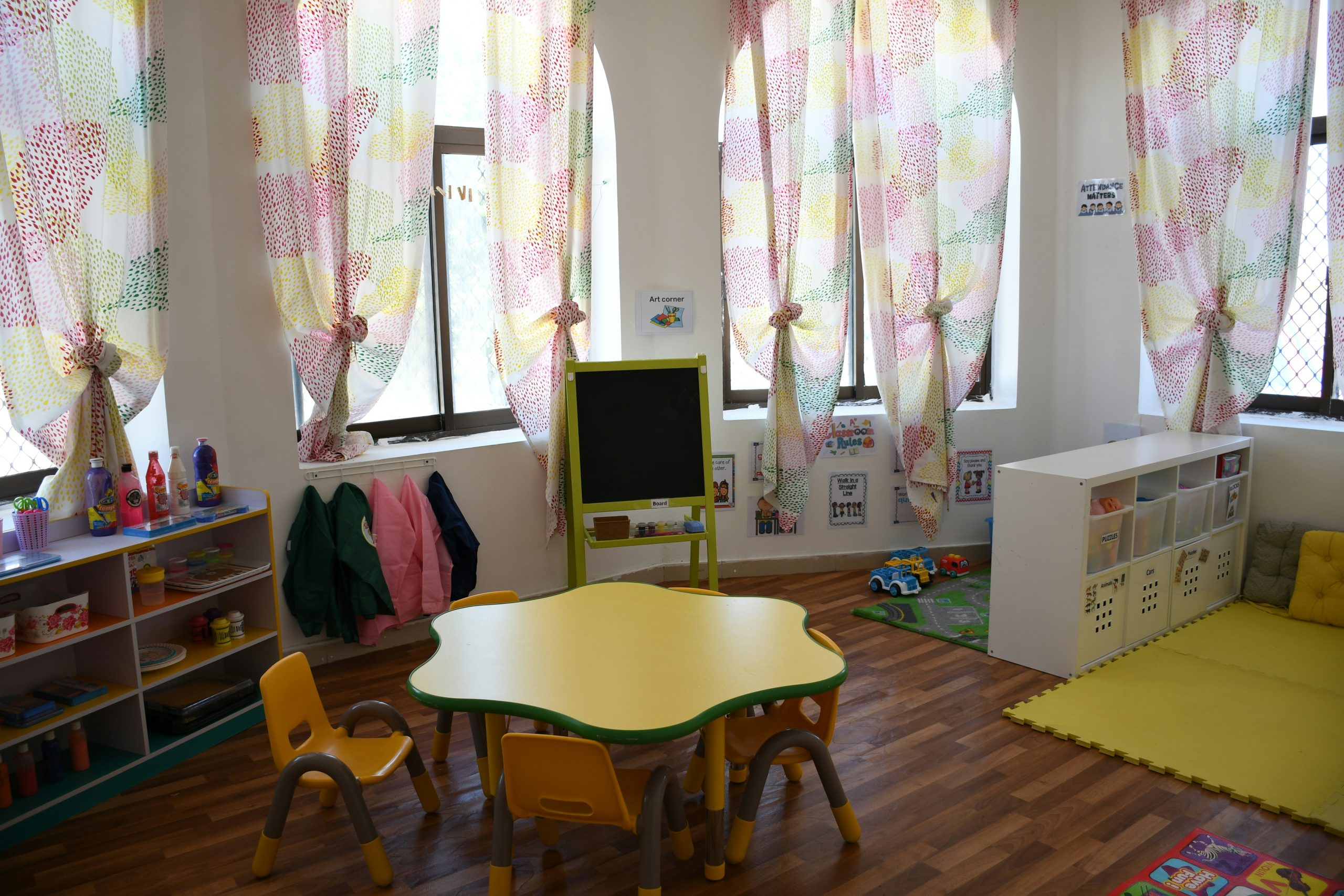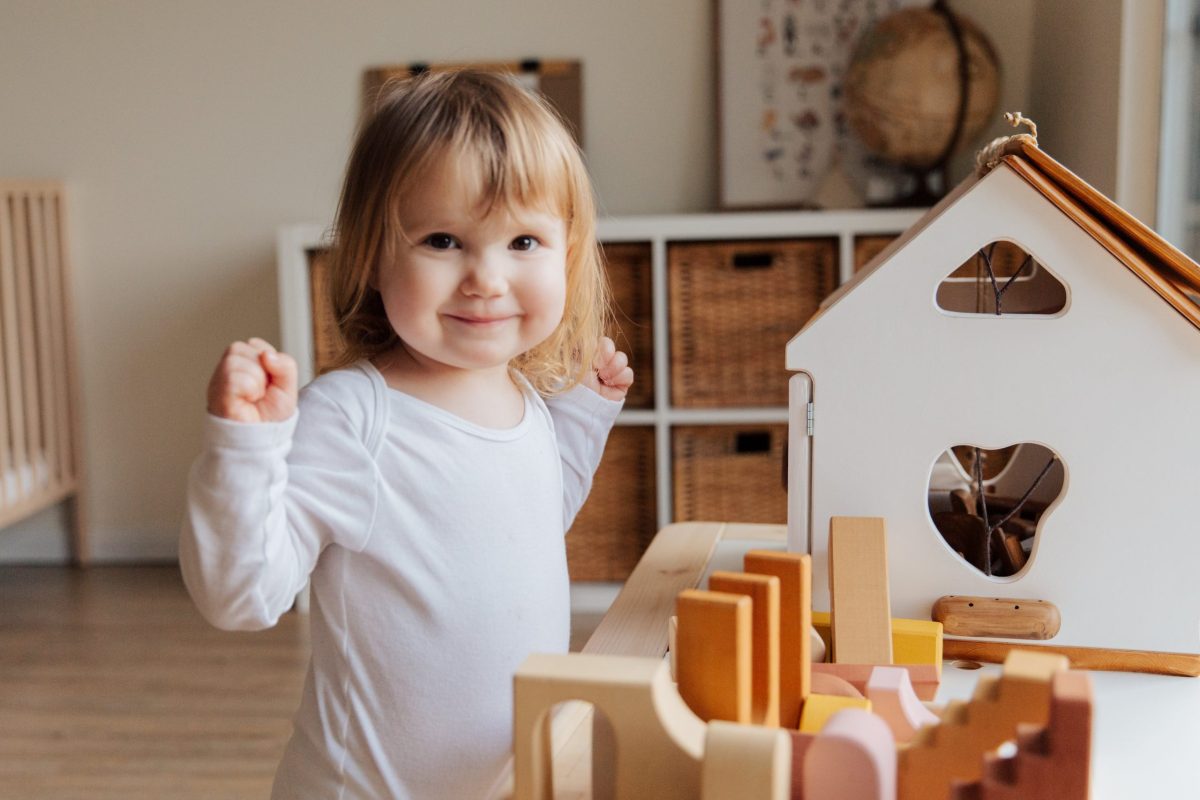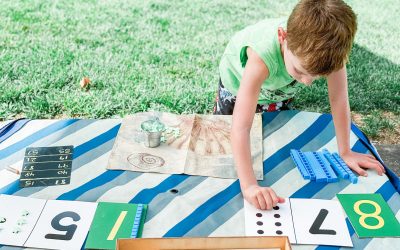Some of the first parenting advice I received as an expectant mother of twins pertained to structure and routines. People would often say something like, “Get the two babies on the same routine as fast as you can!” With so little parenting experience, I had no idea why parents were so passionate about routines. Once the twins were born, however, I quickly learned that thoughtfully structuring their eating and sleeping routines gave us all more confidence about what was happening and when throughout our days.
Science backs the importance of creating habits and routines for children. Some benefits include better sleep, improved social adeptness, and academic performance. Maria Montessori emphasized the importance of structure and order in Montessori environments. There are many practical ways to create structure in a Montessori environment and reap the rewards that follow.

What Is Order in Montessori Environments?
In “The Absorbent Mind,” Dr. Montessori wrote, “The little child’s need for order is one of the most powerful incentives to dominate his early life.” There are a few components that work together to create structure and order in a Montessori classroom or home.
For one, Montessori homes and classrooms have a set schedule. Activities and tasks follow a consistent routine or schedule. In a Montessori classroom, the day may begin with a circle time routine consisting of a song, a calendar update, and the presentation of a new activity. At home, the day may typically end with putting on pajamas, brushing teeth, and reading. Time is often spent in a predictable, orderly manner.
Montessori environments also have clear expectations for behavior and activities. The Montessori approach to behavior management includes setting direct, reasonable boundaries and limitations for children. Limitations may include putting items back in their places once finished with them and being respectful of other children while they’re working. Within boundaries, teachers and parents encourage kids to express themselves and follow their curiosity. This is often called “freedom within limits.”
Structure and order also refer to a general sense of organization regarding the items in the environment. There are minimal objects and a lack of clutter. Additionally, an overall sense of open space and inspiring displays contribute to order. These principles may be apparent in Montessori classrooms as well as Montessori at home play spaces.

The Benefits of Order and Structure
An environment with order and structure has several potential benefits. Building structure through a predictable schedule and routine fosters feelings of calm, confidence, and preparedness.
A morning routine of eating breakfast, getting dressed, brushing teeth, and leaving for school may help children feel prepared and confident to face the day. I have learned the hard way that completing the same tasks in a haphazard and unpredictable order increases the likelihood that one or more of the tasks are hurried or incomplete. Feeling calm and having a sense of control can also help prepare children to learn.
The Montessori learning environment is also organized and decluttered, which can encourage focus, deeper play, and meaningful learning. Additionally, organization also helps kids engage with the items they’re interested in, giving them the freedom to follow their interests.
Tips to Create Structure and Order in Montessori Spaces
There are several ways to create structure and order in Montessori classrooms and at homes. A family or classroom routine is a great place to start.
 Before developing a routine for our family, it works best for us to observe how parts of our day are going now. I’ll wonder, “Are there patterns or sequences of events that seem to work really well for us?” If there are, we will often use those patterns as a framework for our routine.
Before developing a routine for our family, it works best for us to observe how parts of our day are going now. I’ll wonder, “Are there patterns or sequences of events that seem to work really well for us?” If there are, we will often use those patterns as a framework for our routine.
For instance, I have found that our after-school routine is most successful if the kids have a snack first before moving on to other afternoon activities. After a snack and some free time to decompress, we can move into piano practice and homework. Importantly, there is no incorrect Montessori at home schedule and families should do what works best for them.
Another way to create structure and order is to regularly declutter and organize. I have found that organizing the high-use areas of our home, such as the kitchen and living room, highly impacts our family’s sense of order. We spend the majority of our time at home in these areas, and being able to find what we need makes this time more relaxed and enjoyable.
Regularly going through toys and clothes and purging items that are no longer necessary also helps create order. Additionally, having fewer items can make it easier to maintain those items. The Montessori By Mom Toolboxes are a perfect way to focus on collecting a few high-quality materials.
Leave Room for Flexibility and Freedom Within a Structure

Following the same routines day after day, no matter what, sounds a bit boring, doesn’t it? And probably unrealistic for many busy families. We have meetings, parties, holidays, adventures, and field trips, and I know I don’t want to give them up!
My family sticks to a schedule most days, but we have learned to leave room for flexibility in unusual circumstances. This may occur when a grandparent or babysitter puts a child to bed and doesn’t go through the typical routine. The result may be a temporarily upset child. Similarly, a child may have to eat dinner at her brother’s baseball game rather than having her usual sit-down meal at home.
It can be upsetting to kids and adults when the normal routine is upended. In my experience, however, if we hold too tightly to a routine, we miss important experiences. I think practicing adaptability is an important skill at any age. Being afraid to have another caregiver put my kids to bed sometimes would result in my missing other great opportunities. Likewise, worrying about disrupting our typical routine would prevent me from traveling across time zones with my kids.
I have found it most helpful to create strong routines and structures but hold them lightly. When disruptions occur, I adjust my expectations for myself and my kids. A late bedtime may produce grumpier kids, and an unusual dinner setup may result in less food being eaten. While order in Montessori environments can be helpful, the routine is meant to be helpful and serve the people following it, not cause stress. We can always get back to it at a later time!
Kelly Marie is a former scientist and mother of three young kids. She enjoys writing about her experiences in parenting and regularly creates free printable resources for parents and teachers for her blog Hey Kelly Marie. She currently lives in Kentucky with her family.




0 Comments